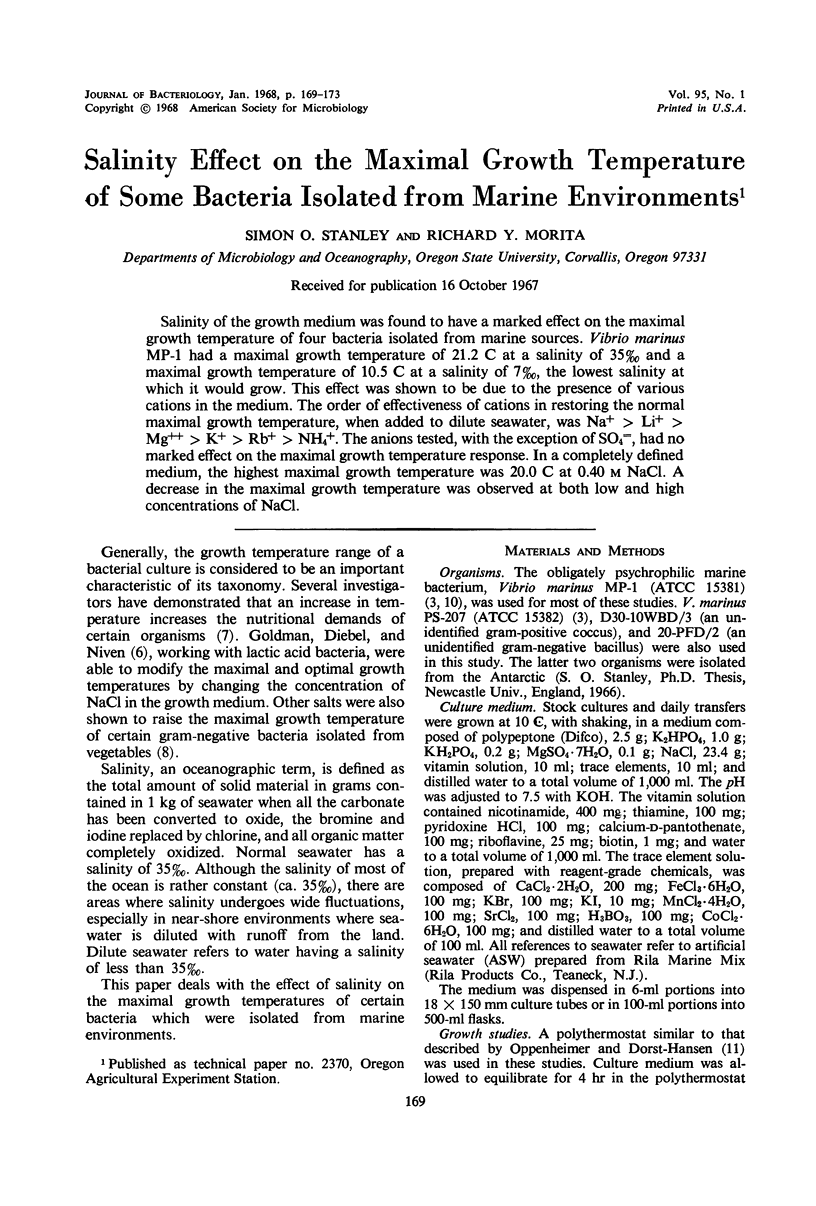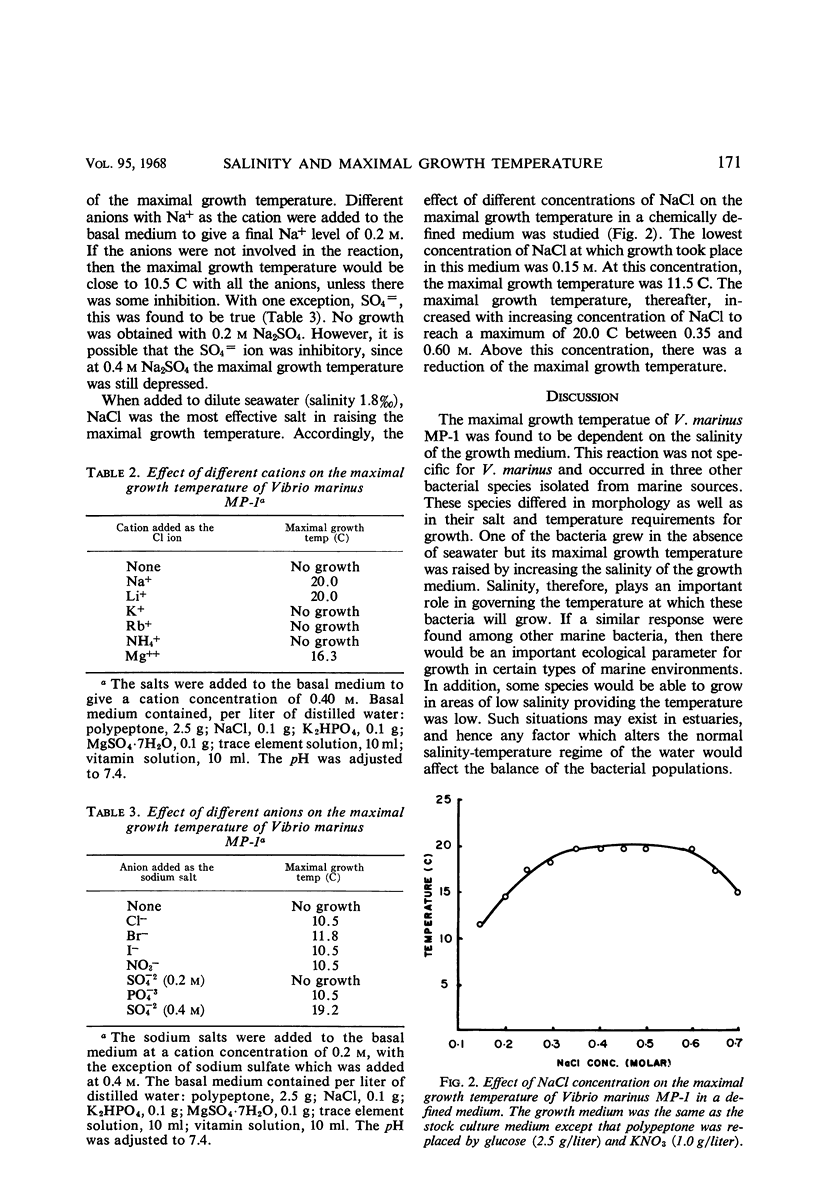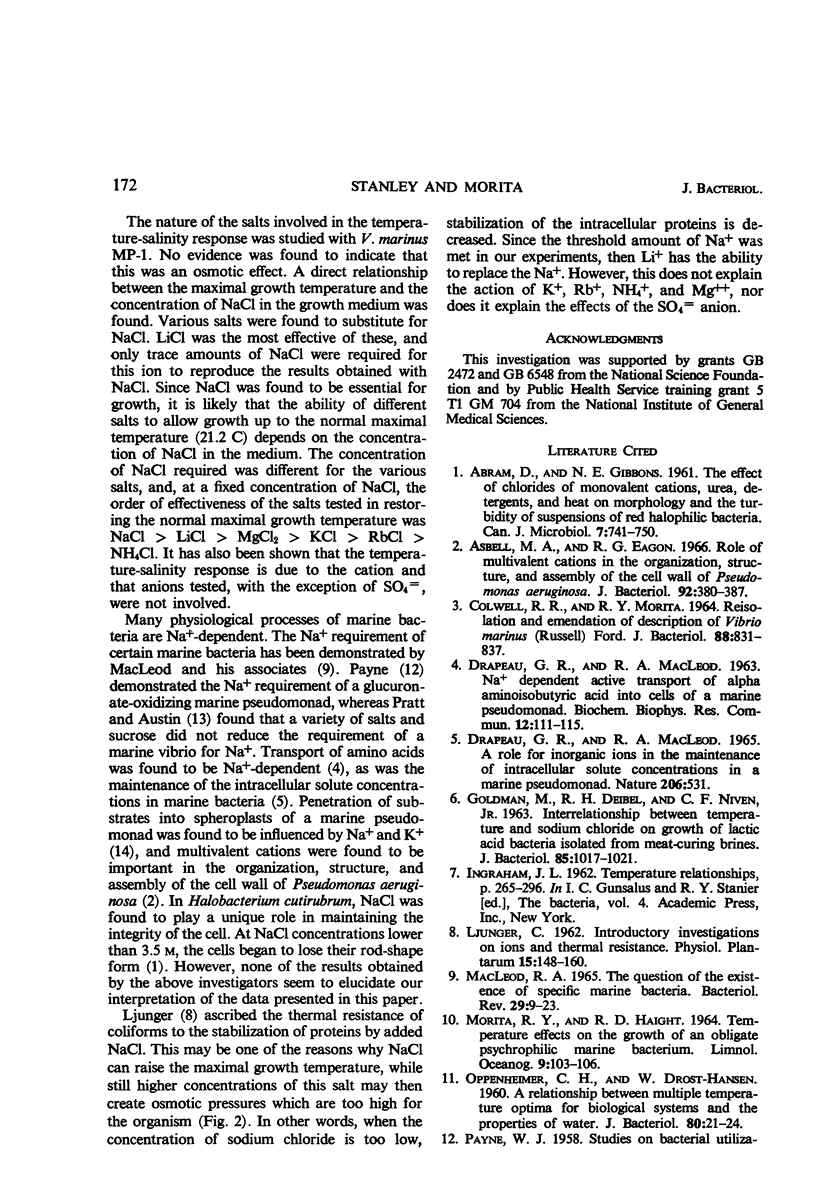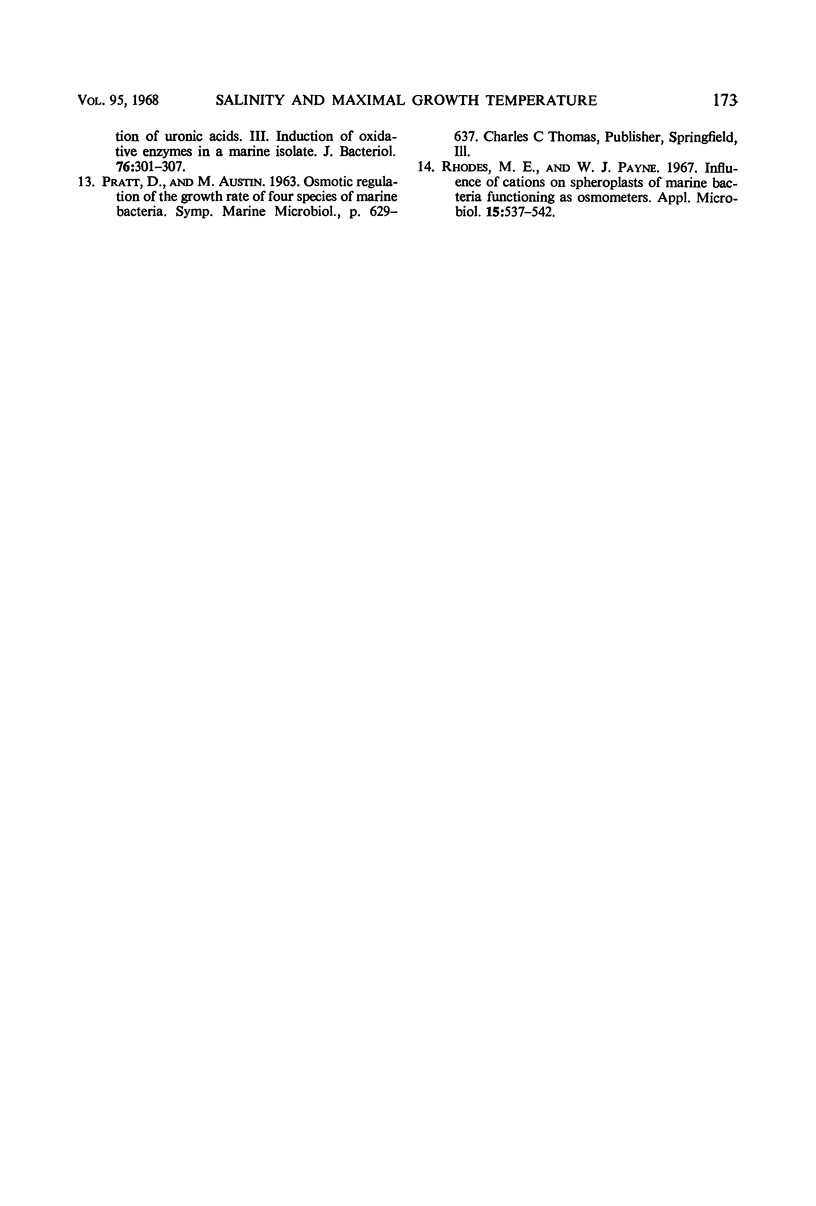Abstract
Salinity of the growth medium was found to have a marked effect on the maximal growth temperature of four bacteria isolated from marine sources. Vibrio marinus MP-1 had a maximal growth temperature of 21.2 C at a salinity of 35% and a maximal growth temperature of 10.5 C at a salinity of 7%, the lowest salinity at which it would grow. This effect was shown to be due to the presence of various cations in the medium. The order of effectiveness of cations in restoring the normal maximal growth temperature, when added to dilute seawater, was Na+ > Li+ > Mg++ > K+ > Rb+ > NH4+. The anions tested, with the exception of SO4=, had no marked effect on the maximal growth temperature response. In a completely defined medium, the highest maximal growth temperature was 20.0 C at 0.40 m NaCl. A decrease in the maximal growth temperature was observed at both low and high concentrations of NaCl.
Full text
PDF




Selected References
These references are in PubMed. This may not be the complete list of references from this article.
- ABRAM D., GIBBONS N. E. The effect of chlorides of monovalent cations, urea, detergents, and heat on morphology and the turbidity of suspensions of red halophilic bacteria. Can J Microbiol. 1961 Oct;7:741–750. doi: 10.1139/m61-088. [DOI] [PubMed] [Google Scholar]
- Asbell M. A., Eagon R. G. Role of Multivalent Cations in the Organization, Structure, and Assembly of the Cell Wall of Pseudomonas aeruginosa. J Bacteriol. 1966 Aug;92(2):380–387. doi: 10.1128/jb.92.2.380-387.1966. [DOI] [PMC free article] [PubMed] [Google Scholar]
- COLWELL R. R., MORITA R. Y. REISOLATION AND EMENDATION OF DESCRIPTION OF VIBRIO MARINUS (RUSSELL) FORD. J Bacteriol. 1964 Oct;88:831–837. doi: 10.1128/jb.88.4.831-837.1964. [DOI] [PMC free article] [PubMed] [Google Scholar]
- Drapeau G. R., MacLeod R. A. A role for inorganic ions in the maintenance of intracellular solute concentrations in a marine pseudomonad. Nature. 1965 May 1;206(983):531–531. doi: 10.1038/206531a0. [DOI] [PubMed] [Google Scholar]
- GOLDMAN M., DEIBEL R. H., NIVEN C. F., Jr INTERRELATIONSHIP BETWEEN TEMPERATURE AND SODIUM CHLORIDE ON GROWTH OF LACTIC ACID BACTERIA ISOLATED FROM MEAT-CURING BRINES. J Bacteriol. 1963 May;85:1017–1021. doi: 10.1128/jb.85.5.1017-1021.1963. [DOI] [PMC free article] [PubMed] [Google Scholar]
- MACLEOD R. A. THE QUESTION OF THE EXISTENCE OF SPECIFIC MARINE BACTERIA. Bacteriol Rev. 1965 Mar;29:9–24. [PMC free article] [PubMed] [Google Scholar]
- OPPENHEIMER C. H., DROST-HANSEN W. A relationship between multiple temperature optima for biological systems and the properties of water. J Bacteriol. 1960 Jul;80:21–24. doi: 10.1128/jb.80.1.21-24.1960. [DOI] [PMC free article] [PubMed] [Google Scholar]
- PAYNE W. J. Studies on bacterial utilization of uronic acids. III. Induction of oxidative enzymes in a marine isolate. J Bacteriol. 1958 Sep;76(3):301–307. doi: 10.1128/jb.76.3.301-307.1958. [DOI] [PMC free article] [PubMed] [Google Scholar]
- Rhodes M. E., Payne W. J. Influence of cations on spheroplasts of marine bacteria functioning as osmometers. Appl Microbiol. 1967 May;15(3):537–542. doi: 10.1128/am.15.3.537-542.1967. [DOI] [PMC free article] [PubMed] [Google Scholar]


